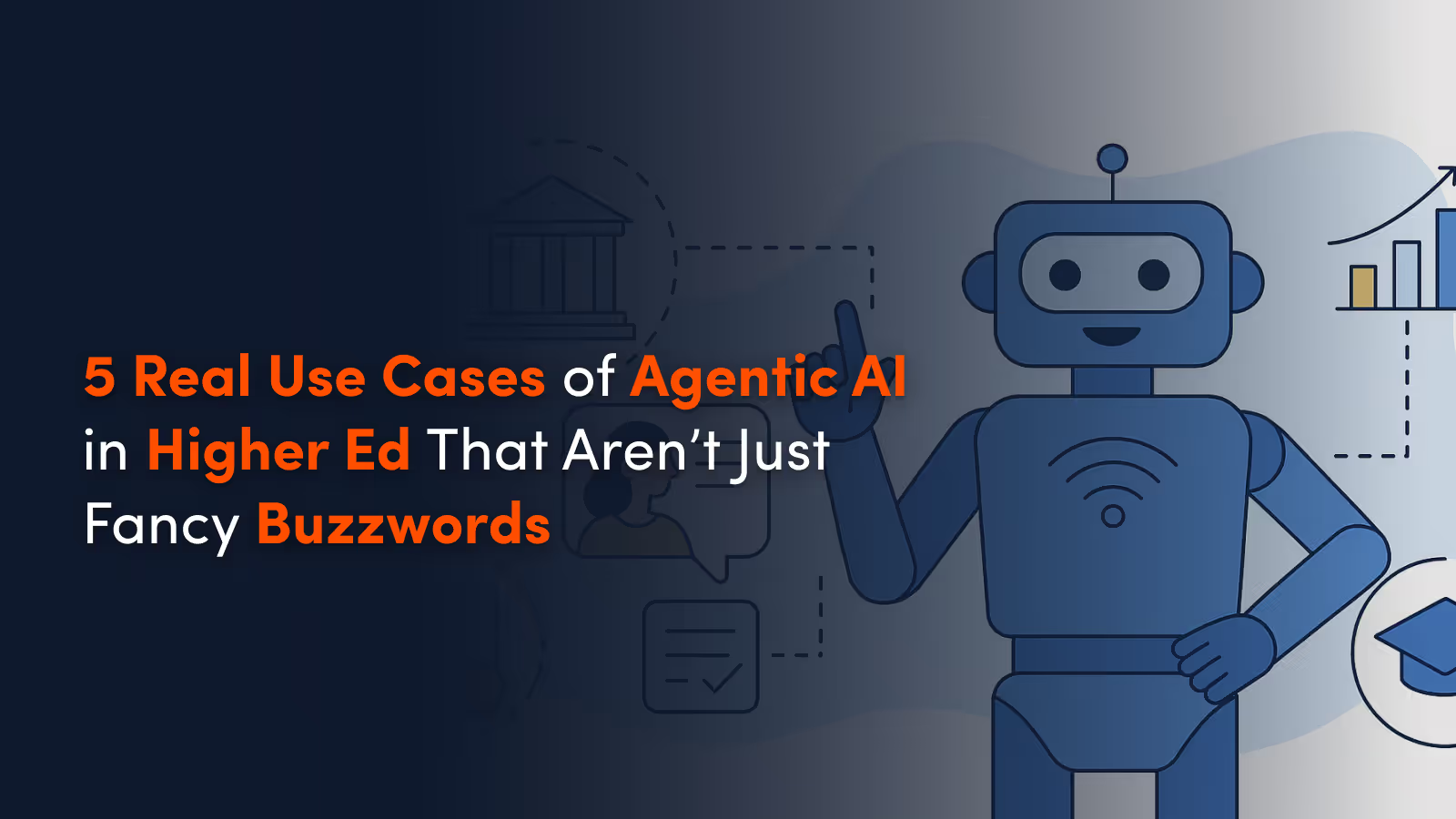About the Blog
Forget the hype. Let’s talk real stories.
Agentic AI isn’t just another buzzword making the rounds at higher ed conferences—it’s here, it's working, and it's reshaping the way colleges attract, admit, and retain students. At its core, agentic AI refers to autonomous systems that can plan, make decisions, and take action toward a defined goal, without needing constant human input. In other words, it’s the digital workforce we’ve been waiting for.
Below, we spotlight real-life examples of agentic AI at work in higher education. These stories aren’t theoretical. They’re from actual institutions using intelligent agents to take repetitive tasks off staff plates, personalize student interactions at scale, and support learners before they slip through the cracks.
Recruitment: Personalized Engagement at Scale
The traditional recruitment model—mass emails, overloaded call centers, and static viewbooks—can’t keep up with Gen Z's (and soon Gen Alpha’s) expectations. That’s where agentic AI comes in.
University of West Florida: Boosting Grad School Yields
The University of West Florida’s graduate programs partnered with Halda to deploy an AI Student Recruiter. This intelligent agent handles outreach across channels—email, SMS, phone, WhatsApp—tailoring its message based on behavioral cues and student profiles. The results? A 32% increase in graduate admission rates. The AI isn’t just answering questions; it’s taking initiative to nudge prospective students through the funnel.
Berry College and Knox College: Smarter Outreach with CollegeVine
Both schools adopted CollegeVine’s AI Recruiter, which acts as a digital ambassador. It proactively surfaces relevant content and resources to students based on their interests and behaviors—no forms, no logins, no friction. The result is more qualified conversations and fewer missed opportunities.
Unity Environmental University: Conversational Career Matching
Unity partnered with Salesforce’s AI platform Agentforce to launch “Una,” a conversational agent that helps students find programs aligned with their career goals. Una doesn’t wait to be asked. It initiates interactions, guides students through options, and is on track to help them actually complete their college applications. This is automation with personality and purpose.
Admissions: Automating the Application Grind
Admissions teams are under pressure to process more applications with fewer people. Agentic AI takes on the repeatable parts—qualification, nudging, communications—so teams can focus on the human moments that matter most.
Element451: Precision Outreach, At Scale
Element451 weaves AI directly into the admissions process. Their platform uses intelligent agents to analyze historical data, predict enrollment likelihood, and auto-generate personalized messages. It’s not just a glorified mail merge—these agents evolve based on outcomes, learning who responds to what and when. The impact? Higher engagement, shorter cycles, and better conversion rates.
Axio Engage: End-to-End AI Admissions
Built specifically for higher ed, Axio’s platform includes AI agents that handle everything from application coaching to onboarding. These aren’t static bots—they act like teammates. When a prospective student abandons an application, an AI agent steps in with personalized follow-ups. When a student needs to submit documents, the agent guides them through the upload process. The focus is on freeing staff from the repetitive grind and making application journeys smoother for students.
Retention: Staying One Step Ahead of Student Needs
Once students are in, keeping them enrolled is another challenge entirely. Agentic AI can help institutions get ahead of issues before they lead to attrition—by surfacing risk patterns, answering student questions in real-time, and making support proactive rather than reactive.
Georgia State University: AI That Improves Re-enrollment
One of the most widely cited examples of AI in retention comes from Georgia State. Their AI chatbot—affectionately named “Pounce”—answers student questions 24/7. But more importantly, it nudges students when critical deadlines are approaching and flags risk indicators. Students who interacted with Pounce were 3% more likely to re-enroll, and the gains were strongest among low-income and first-gen populations.
Packback: AI That Powers Persistence
Packback uses AI to improve student engagement in online courses through real-time feedback and curiosity-driven discussion prompts. Think of it as an AI teaching assistant that helps students build better study habits, think critically, and stay active in class. The result? Higher engagement, better grades, and stronger persistence.
Final Thoughts: Agentic AI Is Already Here
These aren’t pilots or proofs of concept. They’re live, results-driven implementations of AI agents doing real work in higher education today. From nudging applicants, to guiding families through FAFSA, to supporting students late at night when no staff are online, agentic AI is reshaping how institutions operate.
Higher ed doesn’t need more tools that create more work. It needs tools that take on the work—intelligently, independently, and at scale.
If you’re exploring how to bring agentic AI to your institution, start with the pain points your staff and students face every day. Then, look to examples like those above for inspiration on how AI can become a digital teammate, not just another piece of tech.










